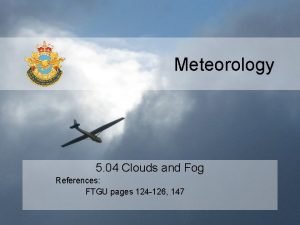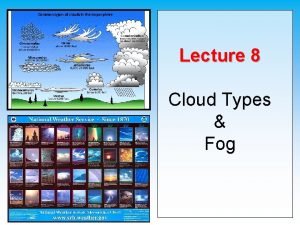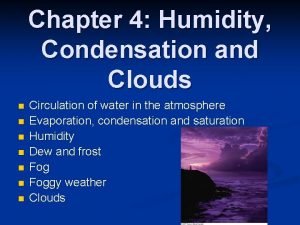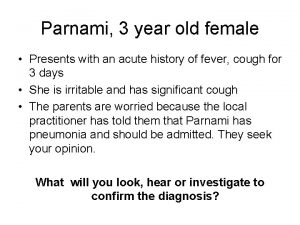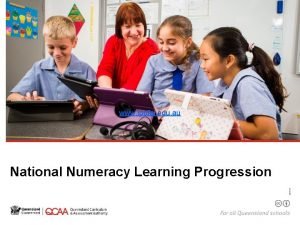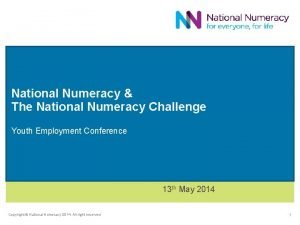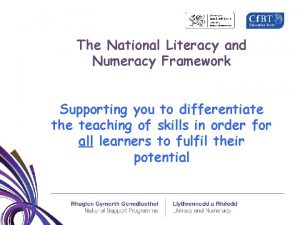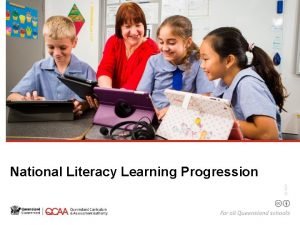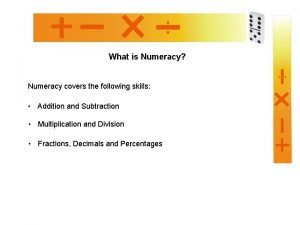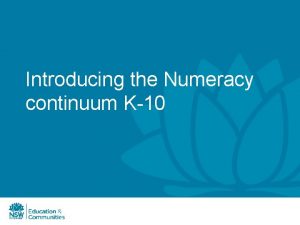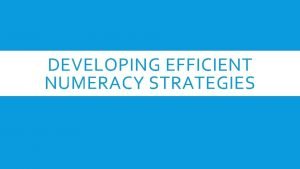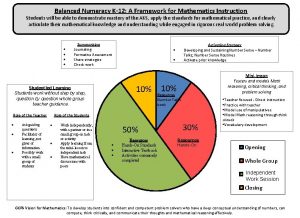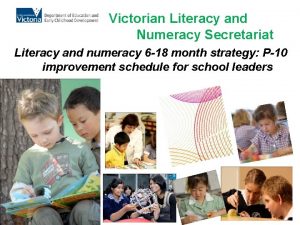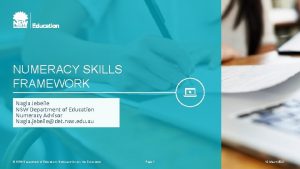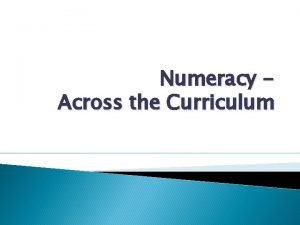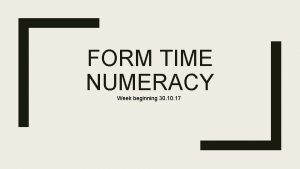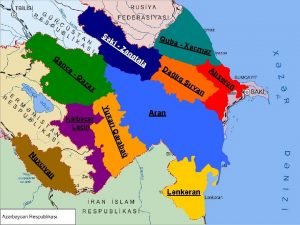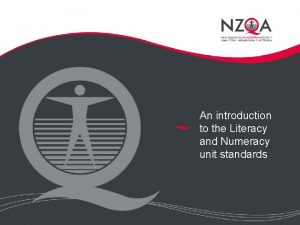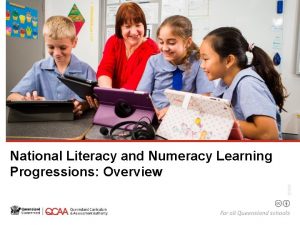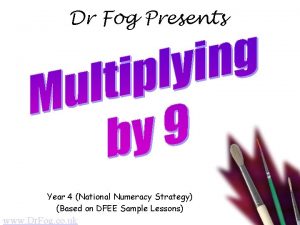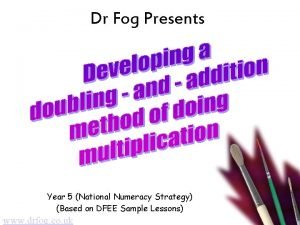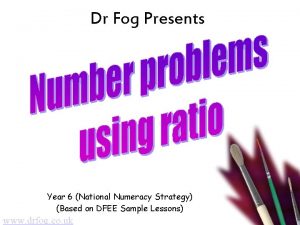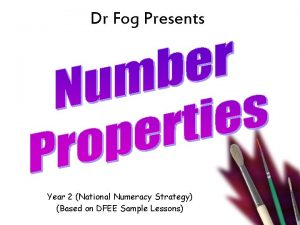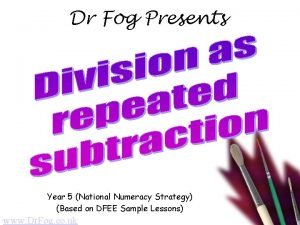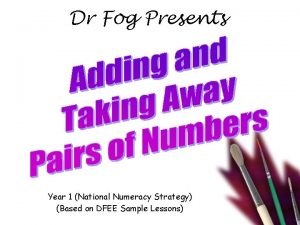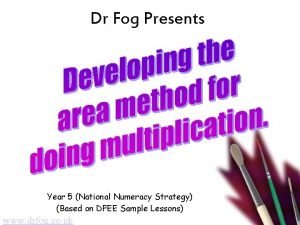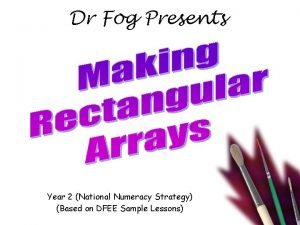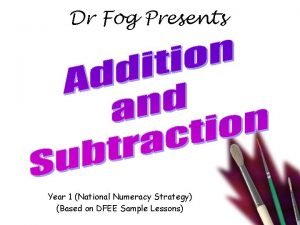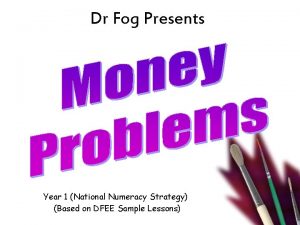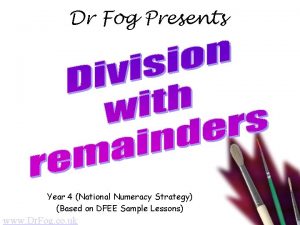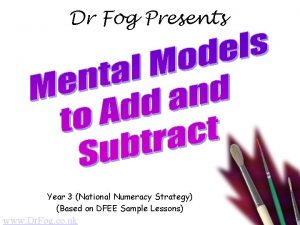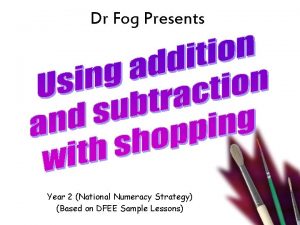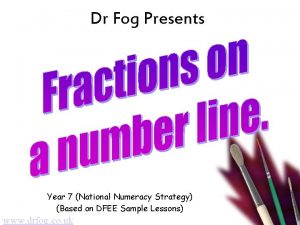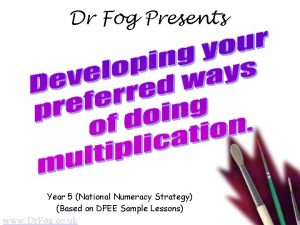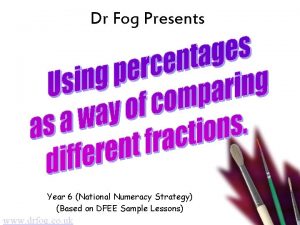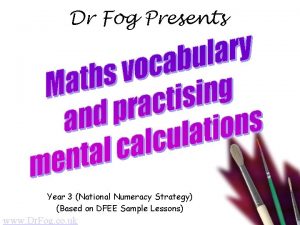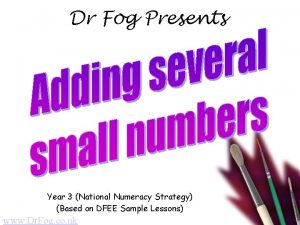Dr Fog Presents Year 4 National Numeracy Strategy






















- Slides: 22

Dr Fog Presents Year 4 (National Numeracy Strategy) (Based on DFEE Sample Lessons) www. drfog. co. uk

Resources • Large beads • Open-topped abacus with at least four spikes. • Each spike should take 9 beads. • An abacus such as this can be made using rods or pencils stuck into a base of plasticine with space for labels. • A label showing a large decimal point. • Abacus or place value worksheet.

Mental Learning Objective • I can use decimal notation for tenths and hundredths.

Mental Learning Task • Today’s lesson is about representing decimal numbers on the abacus.

Mental Learning Task • Think of a decimal number. • Write it in this box. Number box

Mental Learning Task • Does anyone know what an abacus looks like? tens units tenths Hundredth s

Mental Learning Task • Write a decimal number in the number box. Number Box tens units tenths Hundredth s

Mental Learning Task • Try this abacus with other numbers. Number Box tens units tenths Hundredth s

Mental Learning Objective • I can use decimal notation for tenths and hundredths.

Main Learning Objective • I know what each digit represents in a number with up to two decimal places. • I can explain methods and reasoning orally and in writing.

Key idea

Main Learning Task • Complete a worksheet on place values or one of the abacus.

Main Learning Task • We are going to now limit the number of beads to six. • Can you think of a number which can be made from six beads?

Main Learning Task • Draw an abacus with no beads on a sheet of paper. • Explore the numbers you can make using six beads. • Record in figures all the numbers you find.

Main Learning Task • Challenge: • Work out all the possible numbers they could make using just 6 beads, without using an abacus picture.

Main Learning Objective • I know what each digit represents in a number with up to two decimal places. • I can explain methods and reasoning orally and in writing.

Plenary • Which is the largest number you found? • Why is it the largest number? • Which is the smallest number? • Why is it the smallest?

Plenary • Which number is nearest to 30? • Which numbers use only three spikes? • Which numbers only use two spikes? • Which numbers use one spike?

Plenary • How many different numbers are possible with just six beads? • How do you know that?

Plenary • Here is a problem to solve… • Choose three digits (including 0). Use these, and the decimal point, to find the numbers that can be made with them. • Record all numbers, starting with the smallest. • How many different ways can be made this way? • What happens if two of the three digits are the same?

Review of Key Idea • On an abacus, as digits move one place to the right, they get ten times smaller.

Where Can I Find More Resources Like This? • You can now visit my teaching resource website at http: //www. Dr. Fog. co. uk • You can click here to search for more of my teaching resources. • Click here to visit my TES shop!
 5 types of fog
5 types of fog Radiation fog
Radiation fog Advection fog vs radiation fog
Advection fog vs radiation fog A 26 year old female presents
A 26 year old female presents Chapter 17 neurologic emergencies
Chapter 17 neurologic emergencies National literacy and numeracy learning progressions
National literacy and numeracy learning progressions National numeracy challenge
National numeracy challenge National numeracy framework
National numeracy framework Australian curriculum progressions
Australian curriculum progressions Poem about leaving primary school
Poem about leaving primary school What numeracy covers
What numeracy covers Numeracy learning continuum
Numeracy learning continuum Facile counting
Facile counting Numeracy
Numeracy Literacy and numeracy secretariat
Literacy and numeracy secretariat Numeracy skills framework
Numeracy skills framework Numeracy across the curriculum audit
Numeracy across the curriculum audit Grade 10 numeracy assessment practice test
Grade 10 numeracy assessment practice test Form time numeracy
Form time numeracy Scottish survey of literacy and numeracy
Scottish survey of literacy and numeracy Aq q
Aq q Numeracy unit standards
Numeracy unit standards Literacy and numeracy progressions
Literacy and numeracy progressions
